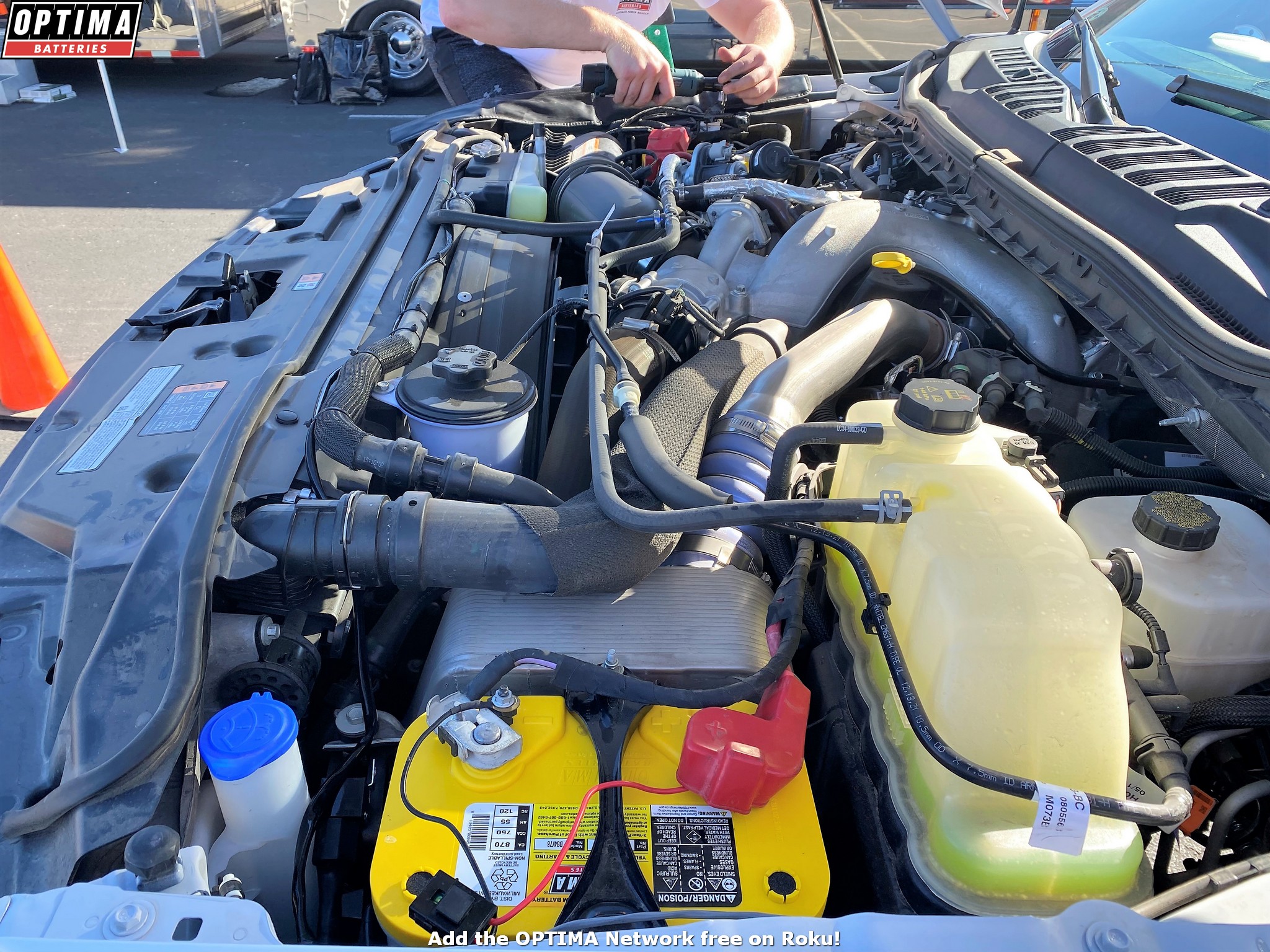How Often Should You Replace Your Car Battery Terminals?

Tips & Support
- Sponsor
- OPTIMA Batteries
- Location
- Glendale, WI


There are definitely parts on all cars and trucks that need to be replaced periodically, including tires, oil filters, brake pads and batteries, but should car battery terminals also be replaced? To clarify what is considered a battery terminal, we would identify a car battery terminal as a connection at the end of a positive or negative battery cable, that attaches to the positive or negative post of a battery. Ideally, car battery terminals should never need to be replaced for the life of the vehicles. However, certain circumstances may arise, where replacement might be warranted.
Corrosion Damage
Flooded lead-acid batteries are not always sealed and as a result, they can leak acid, sometimes building up corrosion around the battery terminals. However, this corrosion can usually be removed with baking soda. While it is present, that corrosion can potentially impede current flow, so it's a good idea to keep it in check. However, battery terminal replacement isn't usually required when removing that corrosion. One of the great benefits of OPTIMA batteries is that they are sealed, so you never have to worry about those snow cone-like growths appearing on OPTIMA battery terminals.
Improper Mounting
Another instance where car battery terminals could be damaged would be if the battery in the vehicle was not properly-secured and the terminals were damaged as a result. We can't say this often enough, but batteries are really heavy items and all vehicles come with some type of strap or clamp system that secures them in place. Often times, when a battery is replaced, someone might be in a hurry and fail to properly-secure the new battery in the vehicle. That means the battery is being held in place only by the cables connected to the battery terminals. Batteries should never be loose in a vehicle or only held in place by battery cables.
This is a potentially dangerous situation, as a vehicle could bounce over a bumpy road (or railroad tracks) and the battery could bounce high enough that it could come in contact with the underside of a metal support bar or hood and arc, creating a very hazardous outcome. Batteries should never be secured in vehicles only by their terminals, but if that happened and they were damaged as a result, the terminals themselves could become compromised or weakened and may need to be replaced.
Sometimes people try to hammer battery cable terminals back on to battery posts. Many battery terminals are made out of a somewhat-soft lead alloy and hammering these terminals could not only damage the cable terminals, but the battery itself. If battery terminals are damaged in this manner, they may need to be replaced.
Overtightening Terminals
Another situation that could result in battery terminals needing to be replaced is if the battery terminals were over-tightened and damaged or broken as a result. We'll once again mention that many battery cable terminals are made out of lead, which is somewhat "soft" compared to other metals, so applying too much pressure or stress on them by repeatedly taking them on and off can damage them either immediately or over time, which could require replacement.
Upgrading/Increasing Demand
The final reason battery terminals may need to be replaced would be if you are modifying the electrical system in your vehicle in a way that will overwhelm the factory system. This could include car audio applications or vehicles with winches, significant auxiliary lighting or other similar accessories. "The Big 3" is one of the first upgrades many car audio enthusiasts perform, which includes upgrading the engine block ground wire, the battery ground wire and the positive alternator wire, as many of the subsequent modifications they plan to make would overwhelm the stock system. Our friends at Powermaster alternators often refer to it as the "Bermuda Triangle" and believe (as do we) that your entire electrical system is only as strong as the weakest link, whether that is the starter, the battery, the alternator or the wiring connecting it all together.
Corrosion Damage
Flooded lead-acid batteries are not always sealed and as a result, they can leak acid, sometimes building up corrosion around the battery terminals. However, this corrosion can usually be removed with baking soda. While it is present, that corrosion can potentially impede current flow, so it's a good idea to keep it in check. However, battery terminal replacement isn't usually required when removing that corrosion. One of the great benefits of OPTIMA batteries is that they are sealed, so you never have to worry about those snow cone-like growths appearing on OPTIMA battery terminals.
Improper Mounting
Another instance where car battery terminals could be damaged would be if the battery in the vehicle was not properly-secured and the terminals were damaged as a result. We can't say this often enough, but batteries are really heavy items and all vehicles come with some type of strap or clamp system that secures them in place. Often times, when a battery is replaced, someone might be in a hurry and fail to properly-secure the new battery in the vehicle. That means the battery is being held in place only by the cables connected to the battery terminals. Batteries should never be loose in a vehicle or only held in place by battery cables.
This is a potentially dangerous situation, as a vehicle could bounce over a bumpy road (or railroad tracks) and the battery could bounce high enough that it could come in contact with the underside of a metal support bar or hood and arc, creating a very hazardous outcome. Batteries should never be secured in vehicles only by their terminals, but if that happened and they were damaged as a result, the terminals themselves could become compromised or weakened and may need to be replaced.
Sometimes people try to hammer battery cable terminals back on to battery posts. Many battery terminals are made out of a somewhat-soft lead alloy and hammering these terminals could not only damage the cable terminals, but the battery itself. If battery terminals are damaged in this manner, they may need to be replaced.
Overtightening Terminals
Another situation that could result in battery terminals needing to be replaced is if the battery terminals were over-tightened and damaged or broken as a result. We'll once again mention that many battery cable terminals are made out of lead, which is somewhat "soft" compared to other metals, so applying too much pressure or stress on them by repeatedly taking them on and off can damage them either immediately or over time, which could require replacement.
Upgrading/Increasing Demand
The final reason battery terminals may need to be replaced would be if you are modifying the electrical system in your vehicle in a way that will overwhelm the factory system. This could include car audio applications or vehicles with winches, significant auxiliary lighting or other similar accessories. "The Big 3" is one of the first upgrades many car audio enthusiasts perform, which includes upgrading the engine block ground wire, the battery ground wire and the positive alternator wire, as many of the subsequent modifications they plan to make would overwhelm the stock system. Our friends at Powermaster alternators often refer to it as the "Bermuda Triangle" and believe (as do we) that your entire electrical system is only as strong as the weakest link, whether that is the starter, the battery, the alternator or the wiring connecting it all together.
